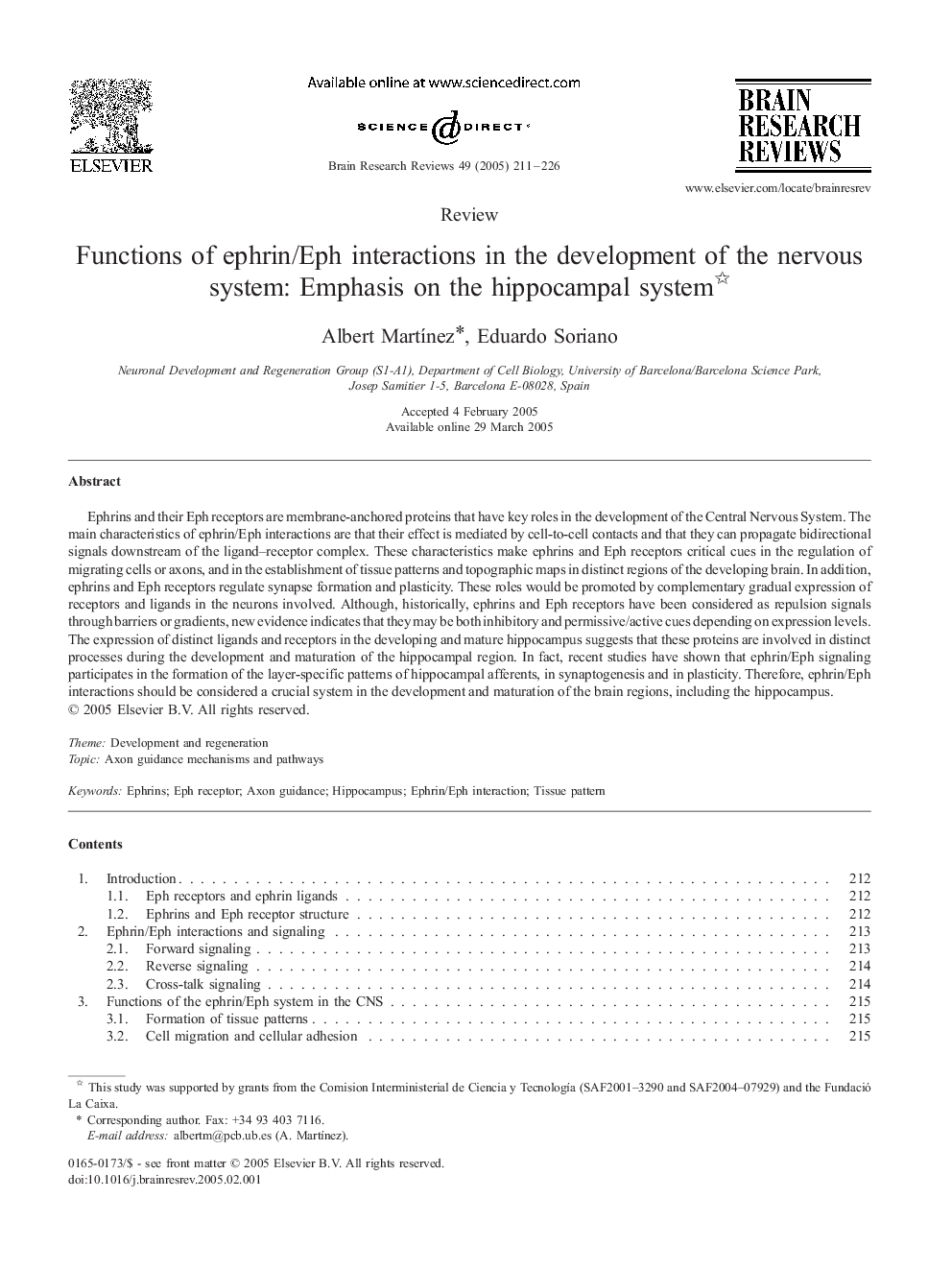| Article ID | Journal | Published Year | Pages | File Type |
|---|---|---|---|---|
| 9423078 | Brain Research Reviews | 2005 | 16 Pages |
Abstract
Ephrins and their Eph receptors are membrane-anchored proteins that have key roles in the development of the Central Nervous System. The main characteristics of ephrin/Eph interactions are that their effect is mediated by cell-to-cell contacts and that they can propagate bidirectional signals downstream of the ligand-receptor complex. These characteristics make ephrins and Eph receptors critical cues in the regulation of migrating cells or axons, and in the establishment of tissue patterns and topographic maps in distinct regions of the developing brain. In addition, ephrins and Eph receptors regulate synapse formation and plasticity. These roles would be promoted by complementary gradual expression of receptors and ligands in the neurons involved. Although, historically, ephrins and Eph receptors have been considered as repulsion signals through barriers or gradients, new evidence indicates that they may be both inhibitory and permissive/active cues depending on expression levels. The expression of distinct ligands and receptors in the developing and mature hippocampus suggests that these proteins are involved in distinct processes during the development and maturation of the hippocampal region. In fact, recent studies have shown that ephrin/Eph signaling participates in the formation of the layer-specific patterns of hippocampal afferents, in synaptogenesis and in plasticity. Therefore, ephrin/Eph interactions should be considered a crucial system in the development and maturation of the brain regions, including the hippocampus.
Keywords
Related Topics
Life Sciences
Neuroscience
Neuroscience (General)
Authors
Albert MartÃnez, Eduardo Soriano,
